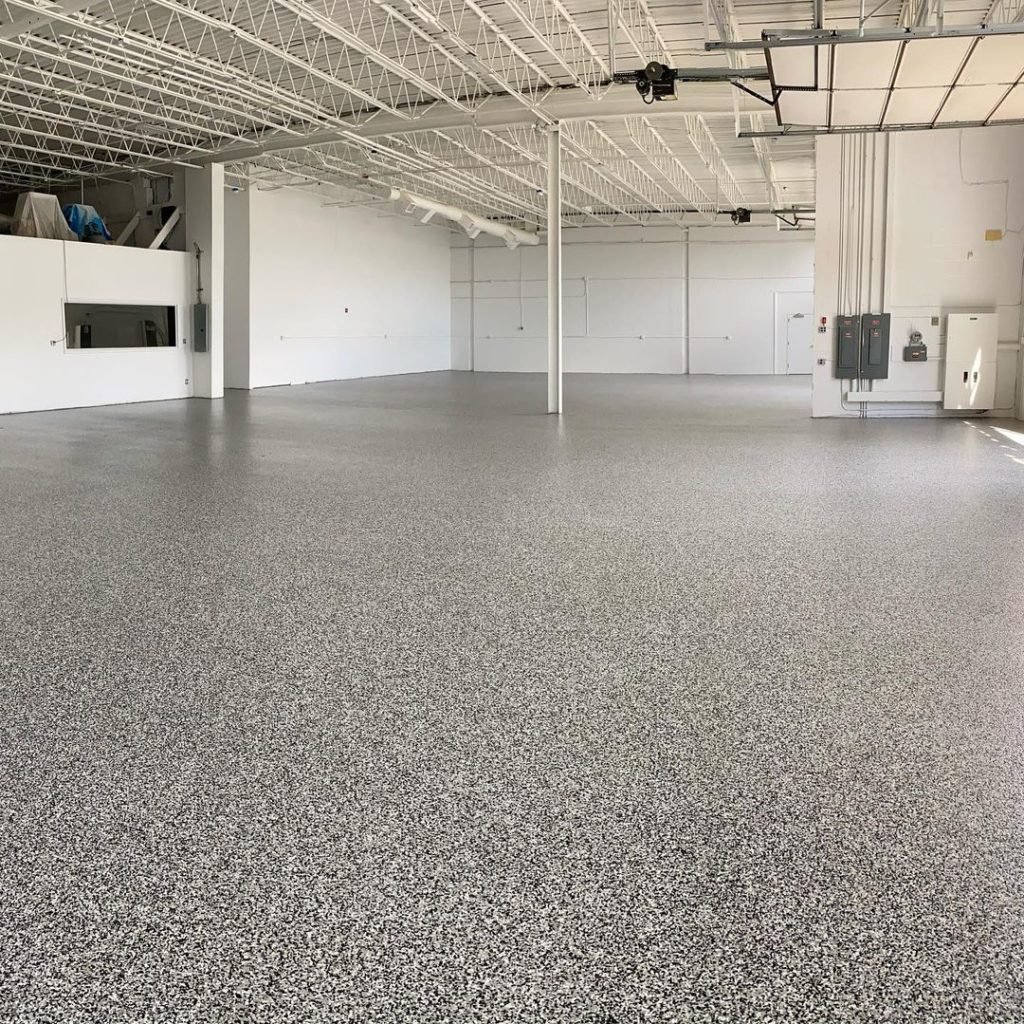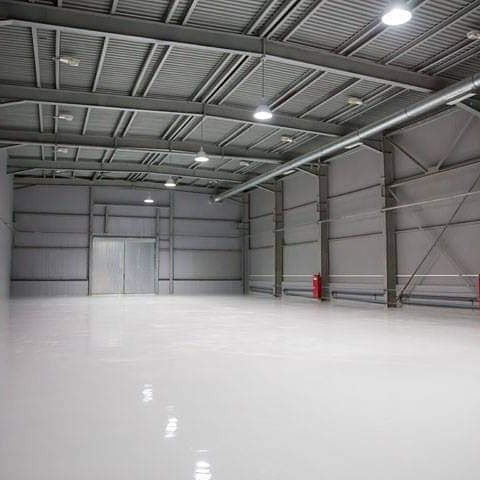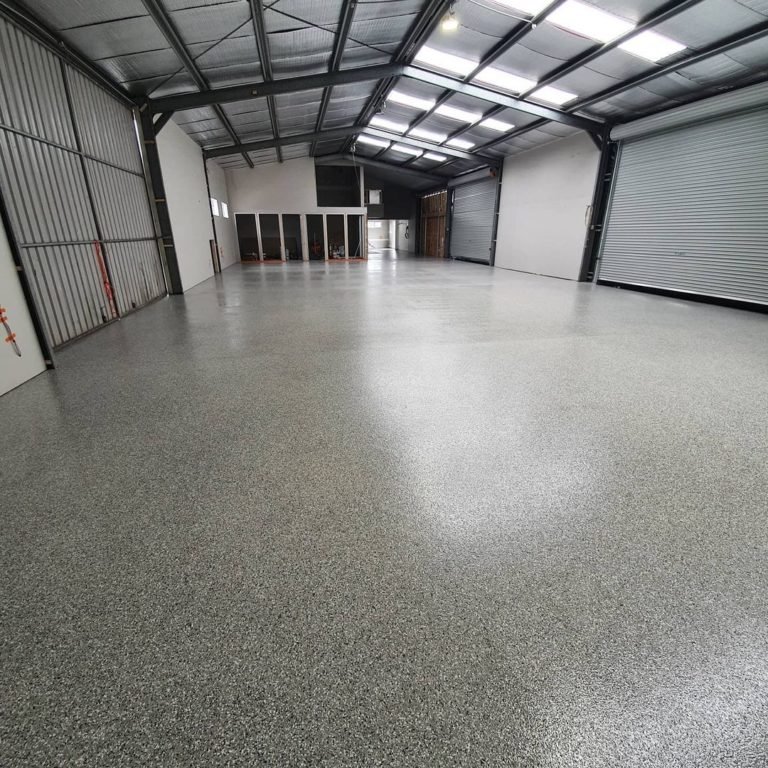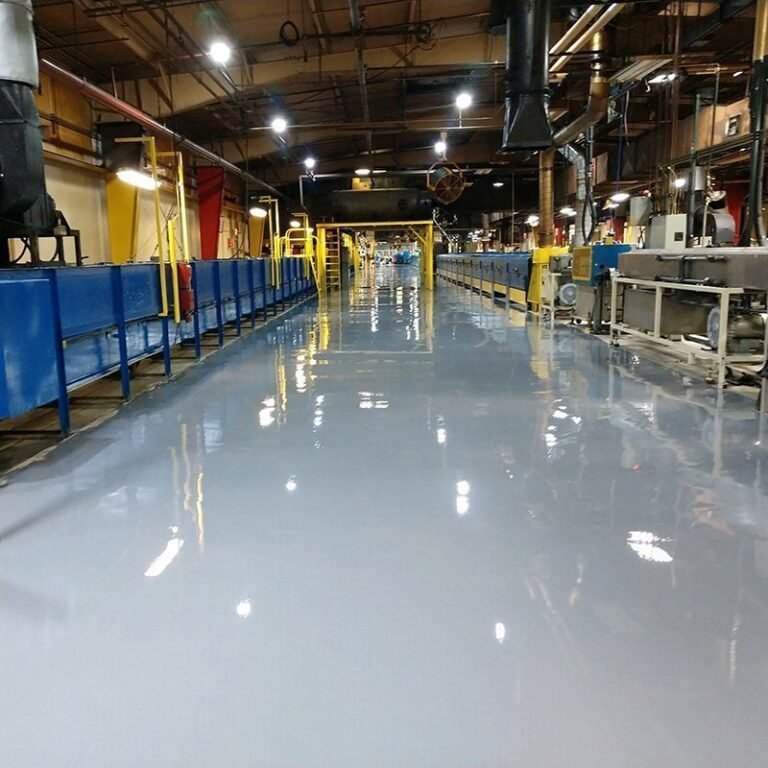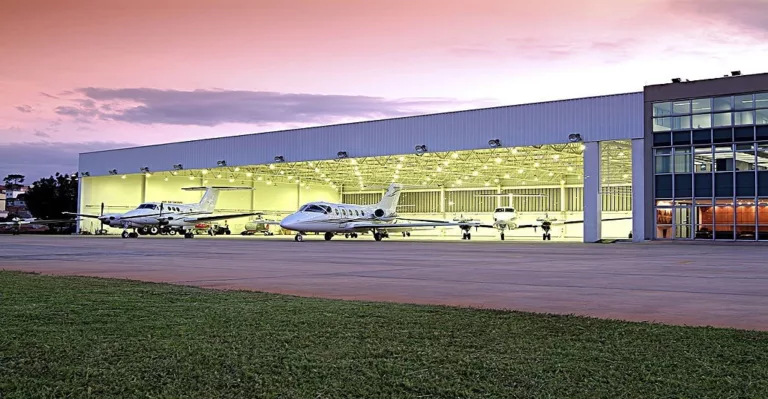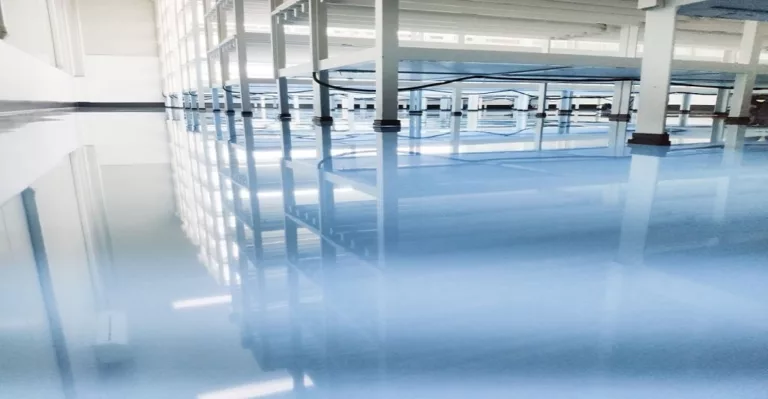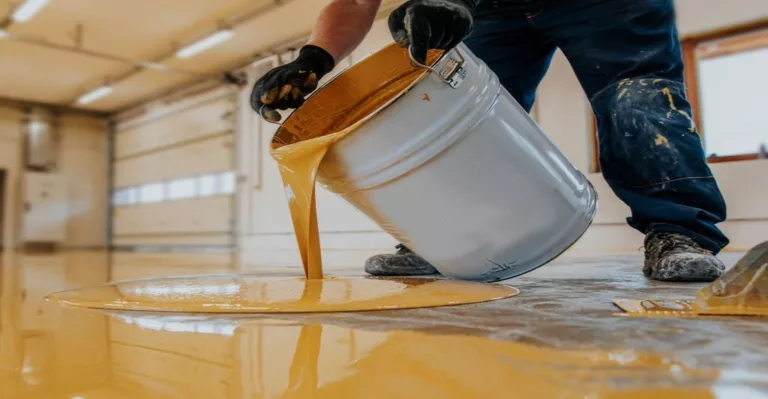The Ultimate Guide to Epoxy Garage Flooring in Vancouver
Epoxy garage flooring has become one of the most popular upgrades for homes and small commercial spaces across Vancouver, Richmond, Burnaby, Surrey, Coquitlam and Abbotsford. Done right, it turns a dusty concrete slab into a clean, bright and durable surface that’s easy to maintain.
This guide explains how epoxy and polyaspartic systems behave in our coastal climate, what they cost in 2025, and the exact installation steps a professional installer should follow so you avoid peeling, hot-tire pickup and early failure.
Why epoxy garage flooring works in Vancouver’s climate
Vancouver’s weather is mild, but tough on concrete: frequent rain, road salt, grit, and occasional freeze–thaw cycles. Bare concrete soaks up moisture and stains easily, and hairline cracks tend to grow as water works its way into the slab.
A properly installed epoxy or polyaspartic system creates a seamless, non-porous surface that resists moisture, road salt, oil and the abrasive dirt that wears out untreated concrete. For garages — where vehicles, chemicals and foot traffic all meet — that combination of protection and cleanability is a big upgrade.

Types of garage floor systems used in the Lower Mainland
Most projects you’ll see around Vancouver fall into four main categories. Your choice comes down to budget, timeline, UV exposure and the look you want.
| System | Best for | Pros | Watch-outs |
|---|---|---|---|
| Standard 100% solids epoxy | Indoor garages and workshops | Durable, economical, excellent adhesion with proper prep. | Longer cure (24–72 hours); needs UV-stable topcoat near strong sunlight. |
| Decorative flake epoxy | Residential garages, small showrooms | Hides imperfections, adds slip resistance, wide colour options. | Broadcast needs skill; poor prep shows through quickly. |
| Metallic epoxy | High-end garages, retail showpieces | Premium “marble” look with depth and movement. | Labour intensive and premium priced; needs experienced installers. |
| Polyaspartic / polyurea | Fast-turnaround, exterior aprons, busy commercial | Very fast cure, excellent UV stability, tough under heavy traffic. | Higher material cost; install is sensitive to temperature and humidity. |
For most indoor residential garages, a decorative flake epoxy remains the go-to option. Where UV exposure and downtime are critical — condo garages, drive aisles, open aprons — polyaspartic is often worth the extra spend.
How a professional epoxy installation should run in Vancouver
A quality installer in the Lower Mainland follows a predictable sequence. If your quote skips these steps, ask why:
- On-site inspection & moisture testing — check for coatings, contamination and vapor drive.
- Mechanical prep — diamond grinding or shot-blasting to create a concrete surface profile.
- Crack and spall repairs — repair mortars to restore a smooth, sound slab.
- Primer coat — seals dust and improves bond to the concrete.
- Base coat — pigmented epoxy or polyaspartic applied at specified thickness.
- Decorative layer — flake broadcast or metallic pigments, if part of the design.
- Clear topcoat — UV-stable, abrasion-resistant layer for gloss and protection.
- Cure & handover — final inspection plus written cure and maintenance instructions.
2025 cost guide for epoxy garages in Vancouver & area
Pricing always depends on the slab, repairs and chosen system, but these ranges are typical for the Lower Mainland:
- Basic epoxy: ~ $8–$12 / sq ft.
- Decorative flake epoxy: ~ $12–$20 / sq ft.
- Metallic epoxy: ~ $18–$30+ / sq ft.
- Polyaspartic: ~ $16–$28 / sq ft.
A 500 sq ft two-car garage in Richmond with moderate prep often lands somewhere in the $6,000–$10,000 range, depending on moisture mitigation and finish selection.
Local examples from around Metro Vancouver
- Kitsilano townhouse: decorative flake epoxy garage. Owners wanted a bright, easy-to-clean surface; end result looks like a mini showroom.
- Coquitlam auto shop: 4 mm epoxy mortar system across service bays for heavy traffic, jacks and lifts.
- Downtown Vancouver condo garage: polyaspartic topcoat to minimise downtime — residents back driving over the surface within about 12 hours.
- Abbotsford warehouse: polyaspartic on exterior apron and internal drive lanes for rapid cure and UV stability.
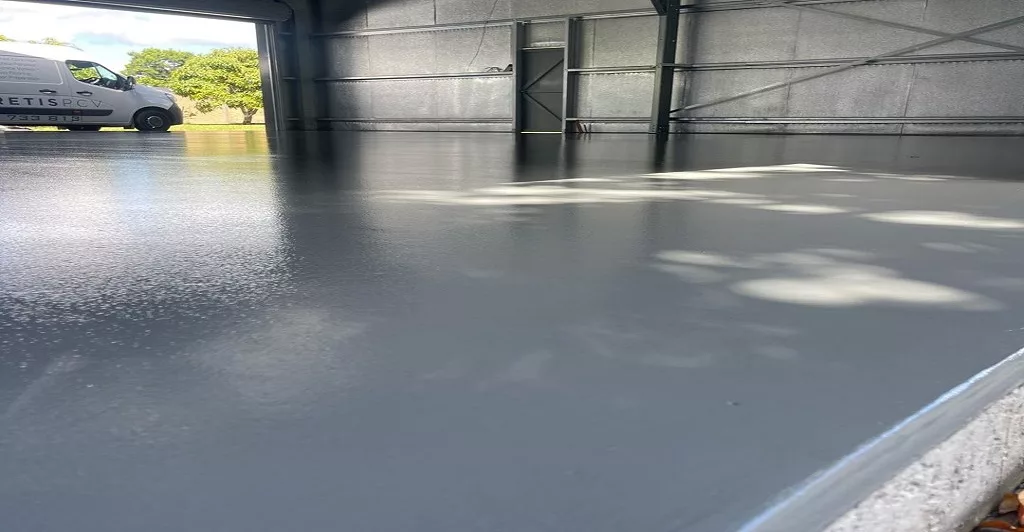

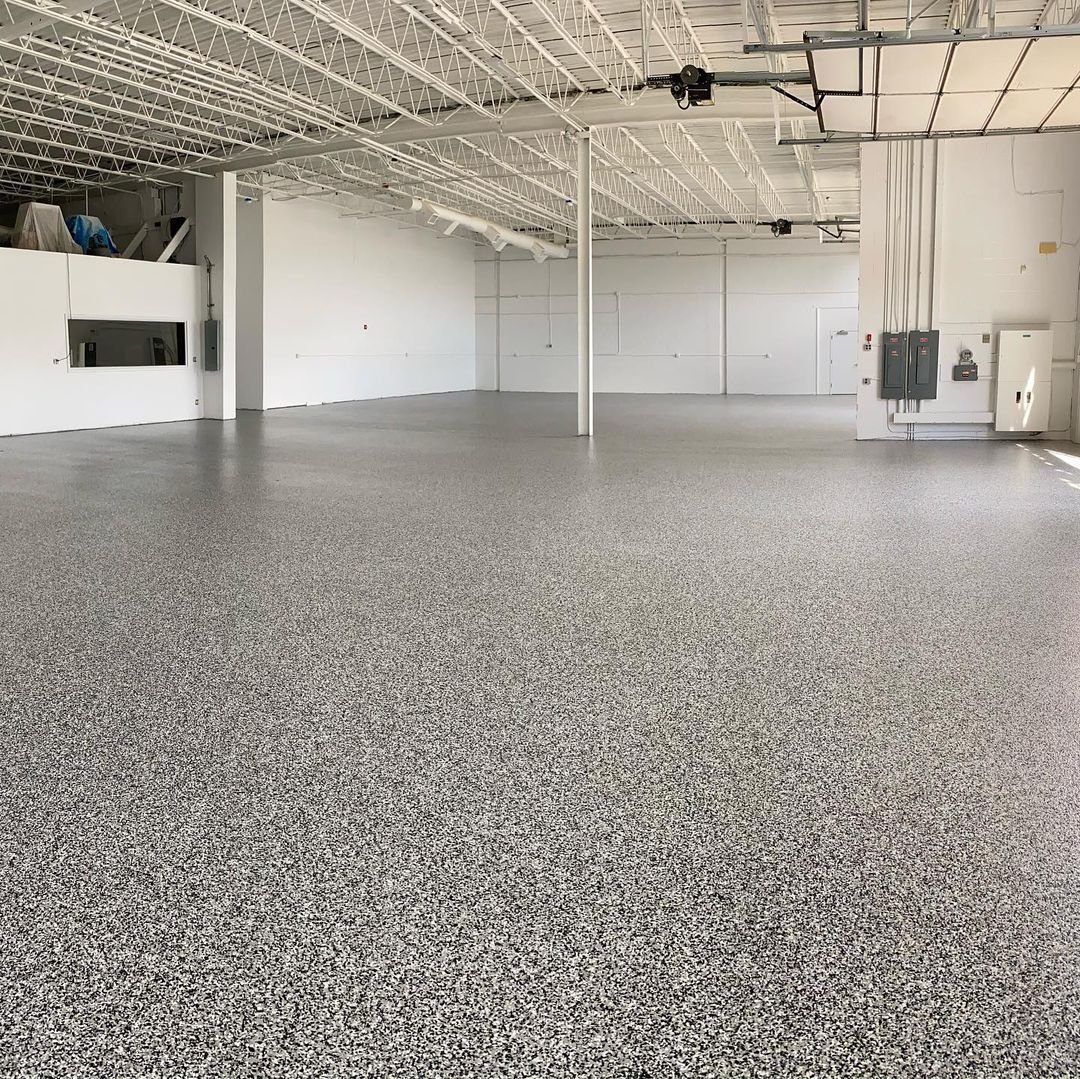
Maintenance & longevity: keeping your floor looking new
Epoxy and polyaspartic systems are low-maintenance, but a few simple habits dramatically extend their life:
- Dust-mop or sweep regularly to remove grit that can wear the topcoat.
- Mop with a pH-neutral cleaner; avoid harsh acids or strong solvents.
- Clean oil and chemical spills promptly with a coating-safe degreaser.
- Use mats at entrances during wet months to cut down on mud and salt.
- Plan a re-topcoat of high-wear lanes every 5–10 years, depending on traffic.
Common installation mistakes to avoid
- Skipping mechanical prep and relying on acid etching alone.
- Ignoring moisture tests in ground-level and below-grade garages.
- Using low-grade products to hit a very low bid price.
- Pouring coatings when it’s too cold, hot or humid for the product spec.
- Skipping primer or using the wrong primer for the substrate and moisture level.
Short local testimonials
How long until I can park on a new epoxy floor?
Most epoxy systems allow light foot traffic after about 24 hours and vehicle traffic after 24–72 hours, depending on temperature and product. Polyaspartic can often be driven on within a day. Your quote should specify cure times.
Will epoxy peel in a damp Vancouver garage?
Peeling is almost always a prep or moisture issue, not a “bad epoxy” issue. With proper moisture testing and mechanical grinding, bond failures are rare.
Is polyaspartic always better than epoxy?
Not always. Polyaspartic shines where UV and downtime are critical. For many indoor garages, a well-installed epoxy flake system offers better value and just as much day-to-day performance.
What kind of warranty should I expect?
Look for written workmanship coverage plus product warranty details tied to a specific system. Priority One Epoxy Flooring includes these details with every quote across Vancouver and the Lower Mainland.
Related services & further reading
Priority One Epoxy Flooring provides free site visits, moisture testing and detailed written quotes for garages and small parkades across Vancouver, Richmond, Burnaby, Surrey, Coquitlam and Abbotsford.

